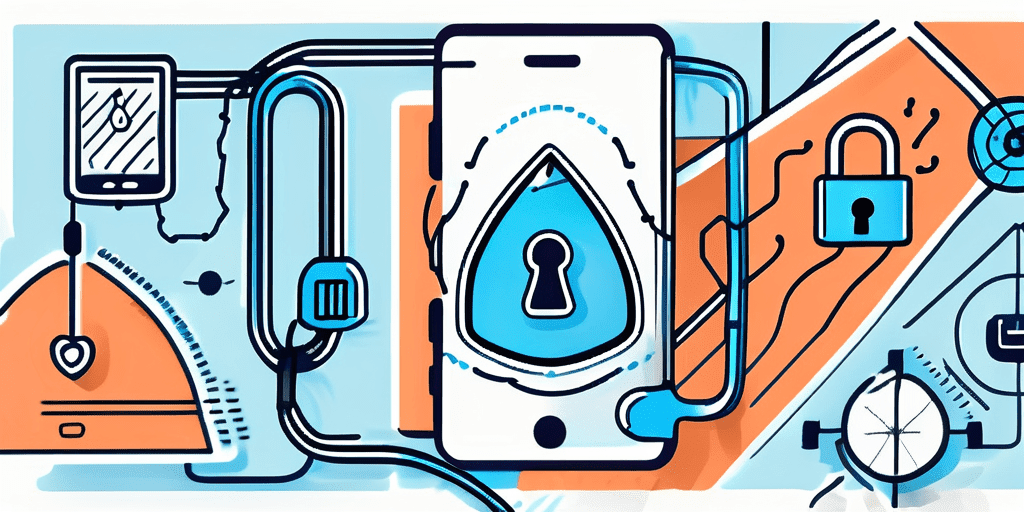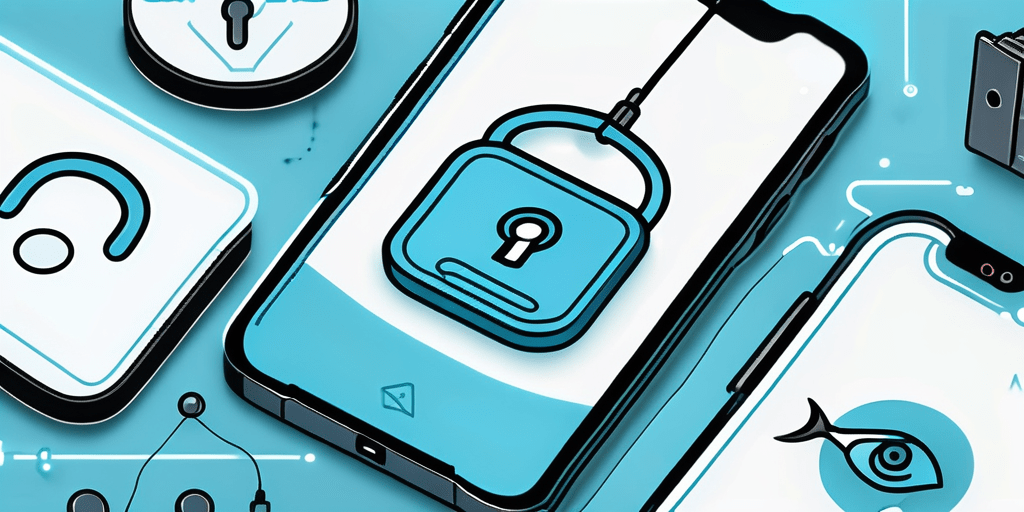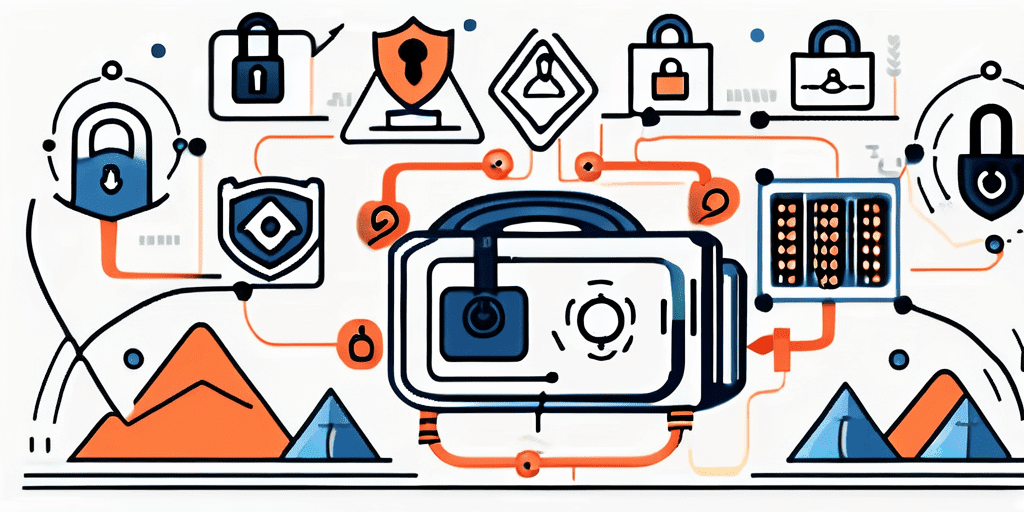Vishing, a combination of the words “voice” and “phishing,” is a social engineering tactic that cybercriminals use to trick individuals into divulging sensitive information over the phone. In this article, we will explore the various aspects of vishing, including its definition, evolution, key characteristics, psychology behind it, common scenarios, execution methods, and prevention strategies.
What is Vishing?
Vishing, short for “voice phishing,” is a deceptive technique that cybercriminals use to manipulate individuals into revealing confidential data, such as credit card numbers, social security numbers, or login credentials. While traditional phishing relies on email as the primary communication medium, vishing takes advantage of human interaction through voice communication.

Unlike phishing emails that cast a wide net, hoping to lure victims through deceptive links or attachments, vishing attacks tend to be more targeted and personal. Cybercriminals gather information about their potential victims from various sources, such as social media platforms or breached databases. Armed with this knowledge, they craft convincing and tailored vishing attempts that increase their chances of success.
The Evolution of Vishing
Vishing techniques have evolved over time alongside advancements in technology. In the early days, vishing attempts were relatively unsophisticated, often involving automated recorded messages claiming to be from legitimate organizations. However, as criminals became more sophisticated, they began employing techniques that mimic caller IDs, making vishing calls appear to originate from trusted sources or even specific individuals.
Furthermore, the rise of Voice over Internet Protocol (VoIP) technology has made it easier for attackers to launch vishing attacks. By utilizing VoIP services, these criminals can easily manipulate phone numbers and spoof caller identification. This makes it incredibly challenging for victims to distinguish between legitimate and fraudulent calls.
Key Characteristics of Vishing Attacks
While the specifics of vishing attacks can vary, they typically share several key characteristics:
- Caller Identity Spoofing: Attackers utilize spoofing techniques to display a fake caller ID, making the call appear to originate from a trusted entity or individual. This deceptive tactic aims to gain the victim’s trust from the moment they pick up the phone.
- Sense of Urgency: Vishing attempts often create a sense of urgency, pressuring victims into quick decision-making and bypassing critical thinking. The attackers rely on the victim’s instinct to act promptly, preventing them from questioning the legitimacy of the call.
- Social Engineering: Vishing relies heavily on psychological manipulation techniques to exploit human vulnerability and trust. Attackers may employ tactics such as building rapport, using persuasive language, or appealing to the victim’s emotions to increase the chances of a successful attack.
- Impersonation: To establish credibility and gain the victim’s trust, attackers may pretend to be someone the victim knows or a representative of a reputable organization. By impersonating a trusted entity, they increase the likelihood of the victim disclosing sensitive information.
- Use of Sensitive Information: Cybercriminals may possess prior knowledge about the victim, which they use during the vishing call to increase their chances of success. By referencing personal details or recent events, they create an illusion of legitimacy, making it harder for the victim to suspect foul play.
Understanding the evolving tactics and characteristics of vishing attacks is crucial in protecting oneself from falling victim to these deceptive schemes. By staying vigilant and being aware of the red flags associated with vishing attempts, individuals can safeguard their personal and financial information from falling into the wrong hands.
Remember, when it comes to vishing, trust your instincts and verify before you disclose any sensitive information over the phone. Stay informed, stay cautious, and stay one step ahead of the cybercriminals.
The Psychology Behind Vishing
To effectively combat vishing, it is crucial to understand the psychological tactics employed by cybercriminals. By leveraging psychological principles, attackers exploit human cognitive biases, emotions, and social norms to manipulate their victims.

When it comes to vishing attacks, cybercriminals employ a range of manipulation techniques to increase the likelihood of success. Let’s take a closer look at some of these techniques:
Manipulation Techniques Used in Vishing
Vishing attackers are masters at playing mind games, and they know exactly how to push the right buttons. Here are a few manipulation techniques commonly used:
- Authority: Impersonating figures of authority, such as law enforcement officers or government officials, to elicit compliance from victims. By posing as someone in a position of power, attackers exploit our natural inclination to follow orders from those we perceive as authoritative.
- Social Proof: Utilizing social proof, such as mentioning that others have fallen victim to similar scams, to create a fear of missing out and evoke a sense of urgency. This technique preys on our innate desire to conform and not be left behind.
- Reciprocity: Offering something desirable in return for the victim’s cooperation, creating a sense of obligation. By appealing to our instinct to reciprocate, attackers manipulate us into feeling indebted and more likely to comply with their requests.
- Rapport Building: Developing a friendly rapport with the victim to establish trust and credibility. Attackers often employ conversational techniques that make us feel comfortable and lower our guard, making it easier for them to manipulate us.
While these techniques are effective on their own, vishing attacks often rely on fear and urgency to maximize their impact.
The Role of Fear and Urgency in Vishing
Fear and urgency are powerful tools in the hands of vishing attackers. They create scenarios that induce fear, such as threatening legal action, outstanding debts, or compromised personal information. By instilling a sense of impending doom, attackers aim to override rational thinking and coerce victims into providing the requested information without questioning the legitimacy of the call.
Furthermore, the element of urgency adds another layer of psychological pressure. Attackers create a sense of time sensitivity, making victims feel that immediate action is necessary to avoid dire consequences. This urgency leaves little room for critical thinking or seeking second opinions, as victims are driven to act swiftly, often without considering the potential risks.
Understanding the psychology behind vishing attacks is crucial in developing effective countermeasures. By being aware of the manipulation techniques employed and recognizing the role of fear and urgency, individuals and organizations can better protect themselves against these deceptive tactics.
Common Vishing Scenarios
Vishing attacks, short for voice phishing attacks, can occur in various contexts, targeting both personal and business environments. These deceptive tactics are designed to trick individuals into revealing sensitive information or performing actions that benefit the attackers.

Vishing in Personal Contexts
Common vishing scenarios directed towards individuals include:
- Financial Scams: Impersonating financial institutions, attackers exploit individuals’ trust and request personal or banking information to resolve alleged issues or claim enticing offers. These scams often use fear tactics, such as warning about account closures or suspicious transactions, to pressure victims into providing sensitive data.
- Technical Support Scams: Posing as technical support representatives, attackers deceive victims into believing their devices have security or performance issues. They then convince individuals to grant remote access to their devices or install malware disguised as necessary software updates. Once the attackers gain control, they can steal personal information or use the compromised device for further malicious activities.
- Prize or Lottery Scams: In this scenario, vishers inform individuals that they have won a prize or lottery. To claim the reward, victims are asked to provide personal information or pay upfront fees. These scams prey on people’s desire for financial gain or excitement, enticing them to disclose sensitive details or send money in hopes of receiving a non-existent prize.
Vishing in Business Environments
While individuals are common targets, businesses are not immune to vishing attacks. Organizations face unique risks that can have significant financial and reputational consequences:
- CEO Fraud: This sophisticated vishing tactic targets high-level executives within companies. Attackers impersonate company officials, often using spoofed email addresses or phone numbers, to trick executives into disclosing confidential financial or operational information. The goal is to exploit the authority and trust associated with executive positions to gain access to sensitive data or initiate fraudulent transactions.
- Employee Credential Theft: In this scenario, vishers pose as internal IT personnel or trusted colleagues. They contact employees and manipulate them into divulging their login credentials, providing access to sensitive systems or data. Attackers may also use the guise of system updates or security measures to trick employees into installing malware on their devices, which can lead to further compromise of the organization’s network.
- Supplier/Vendor Scams: Criminals posing as legitimate suppliers or vendors target businesses by attempting to manipulate employees responsible for financial transactions. Through vishing, they deceive employees into changing payment details or redirecting funds to fraudulent accounts. These scams often involve careful research and social engineering techniques to gain the trust of employees, making them more likely to comply with the attackers’ requests.
It is crucial for individuals and organizations to stay vigilant and educate themselves about these vishing scenarios. By being aware of the tactics employed by attackers, individuals can better protect themselves and their sensitive information. Additionally, implementing strong security measures, such as multi-factor authentication and employee training programs, can help businesses mitigate the risks associated with vishing attacks.
How Vishing Attacks are Executed
Vishing attacks involve a combination of technology and social engineering tactics. Understanding how these attacks are executed is vital in implementing effective preventive measures.
Technology Used in Vishing Attacks
To facilitate vishing attacks, criminals may employ the following technologies:
- Voice Over Internet Protocol (VoIP): Attackers leverage VoIP services to manipulate caller IDs and make calls appear more credible.
- Automatic Number Identification (ANI) Spoofing: ANI spoofing allows attackers to modify the phone number displayed on the recipient’s caller ID.
- Vishing Kits: A range of tools, such as pre-recorded messages and call scripts, aid cybercriminals in conducting vishing attacks at scale.
The Process of a Vishing Attack
A typical vishing attack generally follows these stages:
- Attack Planning: Cybercriminals gather information about the target, including personal details, social media activity, and organization affiliations.
- Caller ID Spoofing: Utilizing technology to manipulate the caller ID, attackers make the call appear genuine and trustworthy.
- Establishing Rapport: Attackers employ rapport-building techniques to gain the victim’s trust and establish credibility.
- Sense of Urgency: Creating a time-sensitive situation or fear-inducing scenario hastens decision-making and prevents victims from seeking appropriate verification.
- Data Extraction: Attackers skillfully extract sensitive information from victims, potentially using various manipulation techniques to increase their chances of success.
- Exploitation: Compromised information is weaponized, enabling criminals to carry out fraudulent activities, such as unauthorized financial transactions or identity theft.
Now that we have explored the basic stages of a vishing attack, let’s dive deeper into the tactics used by attackers during each phase.
In the attack planning stage, cybercriminals meticulously research their targets. They scour social media platforms, online forums, and public databases to gather personal information, such as names, addresses, and even family details. This wealth of information allows them to craft a convincing narrative and tailor their approach to each victim.
When it comes to caller ID spoofing, attackers employ advanced software and techniques to manipulate the displayed phone number. They can make it appear as if the call is coming from a trusted source, such as a bank or a government agency. By exploiting the trust associated with these entities, attackers increase the likelihood of their victims falling for the scam.
Establishing rapport is a crucial step in vishing attacks. Attackers often adopt friendly and empathetic tones to build trust with their victims. They may pose as customer service representatives, offering assistance or resolving a supposed issue. By creating a sense of familiarity and reliability, attackers lower their victims’ guard and make them more susceptible to manipulation.
Creating a sense of urgency is another effective tactic employed by vishing attackers. They may claim that the victim’s account has been compromised or that they are at risk of financial loss. By instilling fear and urgency, attackers push their victims to make quick decisions without seeking proper verification. This impulsive decision-making plays into the hands of the attackers, enabling them to extract sensitive information swiftly.
Data extraction is where attackers truly showcase their manipulation skills. They use a combination of psychological techniques, such as social engineering and persuasion, to coax victims into revealing confidential information. This can include passwords, social security numbers, or even credit card details. Attackers exploit human vulnerabilities, such as trust and the desire to help, to extract valuable data that can be used for malicious purposes.
Once the attackers have obtained the necessary information, they proceed to the exploitation phase. They may use the compromised data to carry out unauthorized financial transactions, open fraudulent accounts, or engage in identity theft. The consequences can be devastating for the victims, leading to financial loss, damaged credit scores, and a significant amount of time and effort required to rectify the damage.
By understanding the intricate details of how vishing attacks are executed, individuals and organizations can better protect themselves against these malicious activities. Implementing robust security measures, educating employees and customers about the risks, and maintaining a healthy skepticism when receiving unsolicited calls can go a long way in mitigating the threat of vishing attacks.
Preventing Vishing Attacks
Protecting yourself and your organization against vishing attacks requires proactive measures and a security-conscious mindset.
Personal Strategies for Vishing Prevention
Follow these precautionary steps:
- Educate Yourself: Familiarize yourself with common vishing techniques and stay updated on the latest vishing scams.
- Verify Requests: Be cautious of calls demanding sensitive information and always verify caller identity independently.
- Do Not Share Personal Information: Refrain from providing personal information or credentials over the phone unless you have initiated the call and are certain of the recipient’s legitimacy.
- Implement Two-Factor Authentication (2FA): Enable 2FA on all relevant accounts to add an extra layer of security.
- Report Suspicious Calls: If you receive a suspicious call, report it to the appropriate authorities, such as local law enforcement or your phone service provider.
Organizational Measures Against Vishing
Organizations can implement the following preventive measures:
- Employee Training: Conduct regular security awareness training sessions to educate employees about vishing attacks and how to identify and report suspicious calls.
- Policy Development: Establish comprehensive policies and procedures for handling sensitive information over the phone, including verification protocols and reporting mechanisms.
- Implement Caller Authentication: Consider implementing tools or services that verify the authenticity of incoming calls, such as voice biometrics or call analytics solutions.
- Monitor and Analyze Call Data: Continuously monitor incoming and outgoing calls for suspicious patterns or anomalies that may indicate a vishing attack.
- Third-Party Vendor Assessment: Evaluate the security practices of third-party vendors that handle sensitive information, ensuring they have robust anti-vishing measures in place.
By understanding the tactics employed in vishing attacks and implementing proactive prevention measures, individuals and organizations can mitigate the risk of falling victim to these deceitful schemes. Stay informed, stay vigilant, and stay protected!
As you navigate the complexities of vishing and other cybersecurity threats, remember that prevention and preparedness are key. Blue Goat Cyber, a Veteran-Owned business, is dedicated to safeguarding your organization against these deceptive tactics. With our expertise in medical device cybersecurity, penetration testing, and compliance with HIPAA, FDA, SOC 2, and PCI standards, we’re equipped to fortify your defenses. Contact us today for cybersecurity help and partner with a team that’s passionate about protecting your business and products from attackers.
